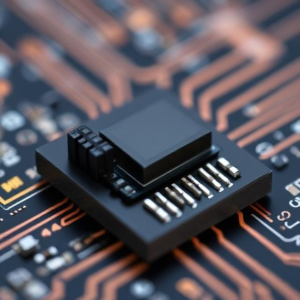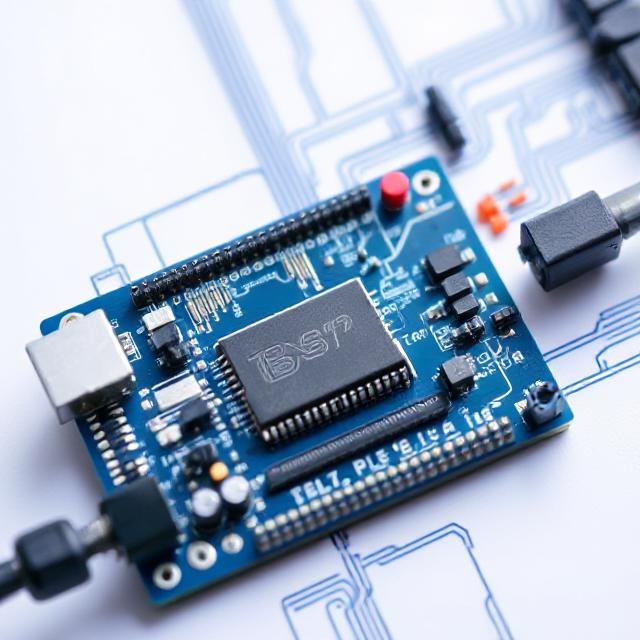1. What Are Accelerometers and Gyroscopes?
Both accelerometers and gyroscopes are sensors that help a smartphone understand how it’s moving in space. These sensors detect changes in motion, orientation, and rotation.

a. Accelerometer:
An accelerometer measures acceleration or the rate at which an object speeds up or slows down. In a smartphone, it senses linear motion—meaning how the phone moves in a straight line.
- X, Y, Z Axes: The accelerometer in your phone typically has three axes: X (left-right), Y (up-down), and Z (forward-backward). It can measure movement along each of these directions.
- Example: When you tilt your phone to switch between portrait and landscape mode, the accelerometer detects the movement and helps the phone adjust the screen orientation.
b. Gyroscope:
A gyroscope measures rotation or the rate at which an object is spinning. While the accelerometer senses straight-line motion, the gyroscope senses how the phone is rotating around its axes.
- It detects angular velocity—how fast the phone is turning or spinning.
- Example: When you play a game that requires you to turn your phone to steer, the gyroscope tracks how the phone rotates to make sure the game responds correctly.
2. How Do Accelerometers and Gyroscopes Work?
a. Accelerometer:
- How it works: Inside an accelerometer, there is a tiny mass that is attached to a spring or a set of electrical components. When the phone moves, the mass shifts, and the movement is detected by sensors. The phone can then calculate how fast it’s accelerating along each axis.
- Example: If you shake your phone, the accelerometer detects the change in speed or direction, which can trigger actions like starting a game or responding to a shake gesture.
b. Gyroscope:
- How it works: A gyroscope usually uses a spinning disk or a set of vibrating elements to detect rotational movement. When the phone rotates, the spinning element inside the gyroscope moves or shifts in response to the rotation, allowing the phone to measure the angle or speed of rotation.
- Example: When you rotate your phone to play a game, the gyroscope detects the rotation and sends this information to the phone’s system so it can adjust the game accordingly.
3. What Do They Do in Smartphones?
Together, the accelerometer and gyroscope help your smartphone understand both motion (moving from one place to another) and orientation (how it’s positioned in space). Here’s what they do:
a. Screen Orientation:
- Portrait to Landscape: The accelerometer detects when you turn the phone from a vertical (portrait) to horizontal (landscape) position. The phone automatically adjusts the screen orientation, so it’s the right way up.
- Auto-rotation: It makes sure the screen switches between portrait and landscape smoothly as you rotate the phone.
b. Step Counting and Fitness Tracking:
- Accelerometer: Phones use accelerometers to detect when you’re walking, running, or moving. This helps fitness apps track your steps and activity levels.
- The accelerometer senses the up-and-down motion of walking and uses that information to count your steps.
c. Game Control:
- Gyroscope: In games, the gyroscope allows you to tilt or rotate your phone to steer or control gameplay. For example, in racing games, you can tilt the phone to steer your car left or right.
- Accelerometer: It can also detect if you’re shaking the phone or making specific gestures, triggering certain game actions.
d. Navigation (GPS):
- Both Sensors: When you’re using maps or navigation apps, the accelerometer helps track your movement (e.g., walking or driving), while the gyroscope helps understand your phone’s orientation (e.g., which way it’s facing) to give you more accurate directions.
e. Virtual Reality (VR) and Augmented Reality (AR):
- Gyroscope: In VR and AR, your phone needs to know exactly how it’s oriented in 3D space to correctly display virtual content. The gyroscope helps the phone track how it’s turning or rotating.
- Accelerometer: It tracks the movement of your phone, allowing the virtual world to respond in real-time as you move around.
4. How Are They Different from Each Other?
- Accelerometer: Measures straight-line movement or changes in velocity (speeding up or slowing down). It tracks linear acceleration (how fast something is moving in a straight line).
- Gyroscope: Measures rotational movement or how fast something is spinning. It tracks angular velocity (how fast something is turning).
5. Applications in Daily Life
a. Driving:
In a navigation app, both sensors help track the direction you’re facing (gyroscope) and how fast you’re moving (accelerometer). They ensure the map is always in the correct orientation, even if you change direction.
b. Photography:
Some smartphones use the gyroscope to stabilize the camera. If you move the phone slightly while taking a picture, the gyroscope helps the phone keep the image steady, reducing blur caused by shaking.
c. Augmented Reality:
AR apps, like those that place virtual furniture in your room, use both the accelerometer and gyroscope to understand your phone’s position and orientation. This helps the virtual object stay in the correct place as you move around.
6. Why Are They Important in Smartphones?
- Precision and Interactivity: They make smartphones more interactive by detecting gestures, tilts, and movements. They allow for more intuitive and responsive features, like screen rotation and motion-based controls.
- Enhanced Experiences: They improve experiences in fitness tracking, gaming, navigation, and VR/AR, making smartphones more useful and fun.
7. Conclusion
To sum it up:
- Accelerometers help measure straight-line motion (like shaking, moving, or tilting your phone).
- Gyroscopes measure rotational movement (like turning, spinning, or tilting in space).
Together, these sensors make smartphones smarter, helping them understand how they’re moving and where they’re positioned. They play a big role in everything from fitness tracking to gaming, navigation, and even camera stabilization. These sensors help make your phone a more interactive and powerful tool in your daily life.











